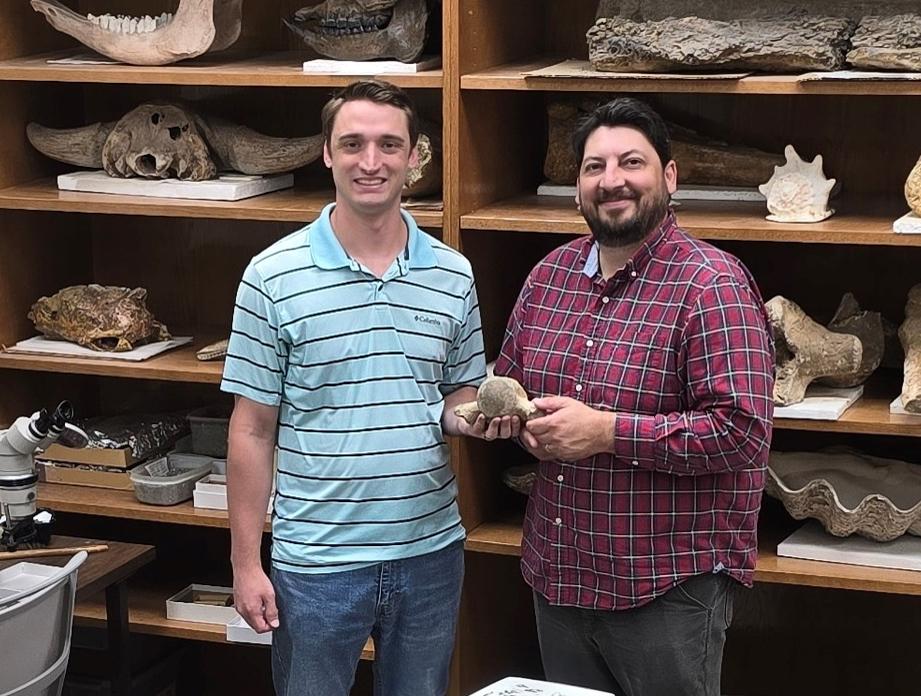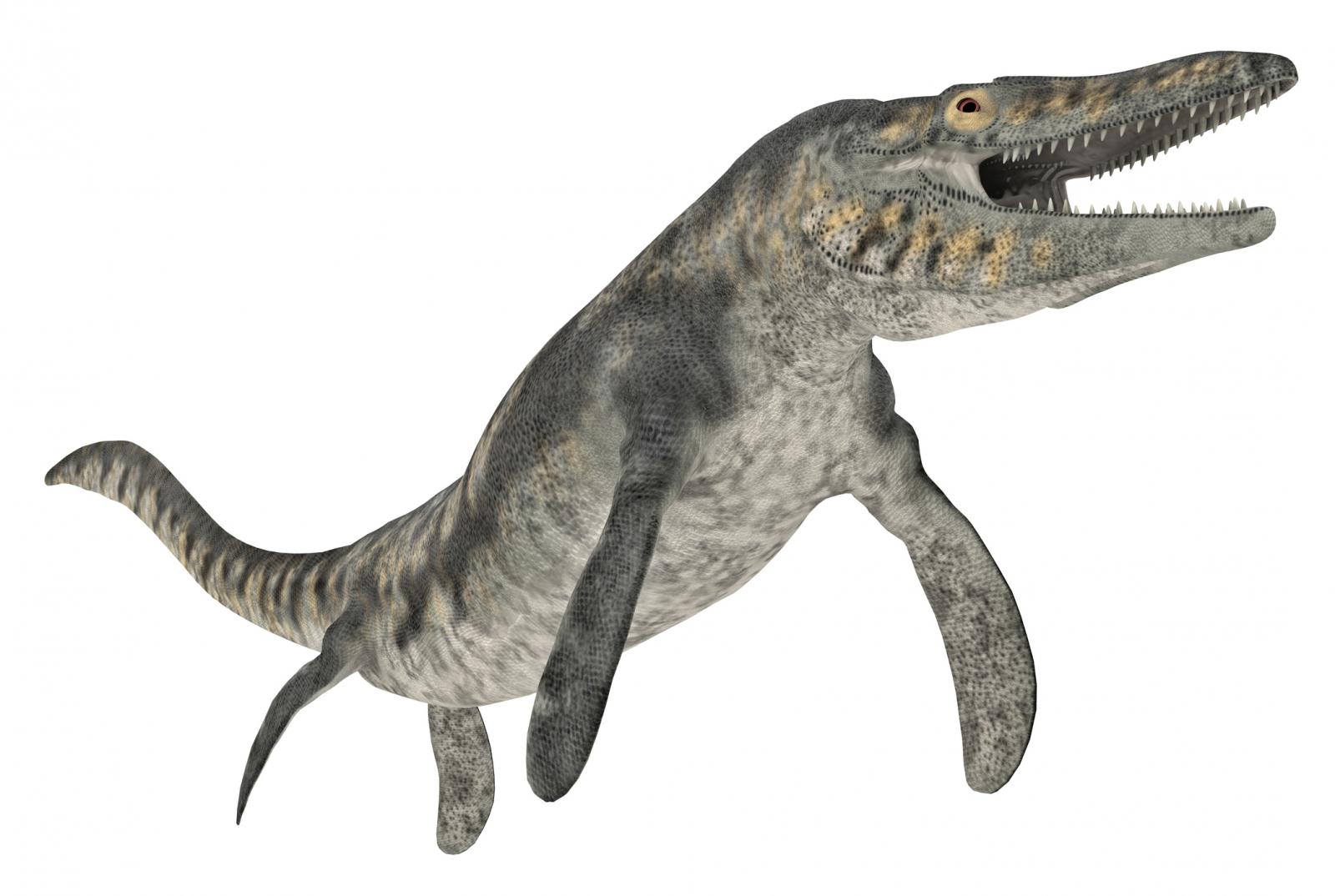MSU researchers, both MGS geologists, help unearth giant mosasaur fossil near campus

Contact: Sarah Nicholas
STARKVILLE, Miss.—Scientists with Mississippi State University are playing a key role in an exciting new fossil discovery that’s close to campus, a discovery that may represent the largest mosasaur ever found in the state.
MSU doctoral researchers Jonathan Leard and Tim Palmer—both full-time professional geologists with the Mississippi Geological Survey—recently helped identify and recover a massive, fossilized mosasaur vertebra, the largest backbone of its kind ever found in the state, while working on a project with James Starnes, director in the Mississippi Department of Environmental Quality’s geological division.
Leard and Palmer are experienced scientists pursuing their doctoral degrees in earth and atmospheric sciences at MSU while continuing full-time work in the field. They plan to complete their degrees through MSU’s Department of Geosciences later this year.
The find was made near Starkville during a geologic survey intended to create a three-dimensional map of the region’s subsurface. The team had already uncovered fossilized marine shells when the vertebra emerged from the muddy sediment.
“When we found the fossil, only the ball was exposed,” Leard said. “It alone was the size of a baseball. I carefully dug the marl away from around the weathered vertebral processes and pulled it out of the ground. Our hearts were racing as we passed it around in disbelief at the size. We could not wait to get back to the Museum of Natural Science in Jackson to confirm the fossil was indeed ‘mosasaur’ by comparing it to other specimens in the collection.”

The vertebra, measuring more than seven inches across, belonged to Mosasaurus hoffmannii, one of the largest marine reptiles to roam Earth’s ancient seas about 66 million years ago. Researchers estimate the creature would have been at least 30 feet long. For modern-day comparison, a mosasaur is similar to a crocodile––an aquatic reptile built for speed, but the size of a school bus and with the hunting instincts of an orca––with a long tail, paddle-like limbs and powerful jaws capable of taking down even other mosasaurs.
“The mosasaur find is one of many examples that reminds me of the choice I made long ago to do what I love,” Palmer said.
Palmer said his geological studies in Mississippi have opened up many academic and professional opportunities.
The fossil was turned over to the Mississippi Museum of Natural Science, where it was confirmed to be M. hoffmannii. Mosasaurs are believed to have thrived near the end of the Cretaceous period in the warm, shallow sea that covered Mississippi—an ecosystem rich with marine predators, sharks and flying reptiles.
This discovery adds to Mississippi’s growing reputation as a hotspot for marine fossils and highlights the university’s ongoing contributions to geologic and paleontological research in the state.
MSU’s Dunn-Seiler Museum––located in Hilbun Hall––showcases an extensive collection of fossils, rocks and minerals that illustrate Earth’s ancient history. Fossils similar to the new mosasaur are available for viewing. Open to visitors of all ages, with over 1,000 annual guests—primarily schoolchildren—the museum showcases displays such as a Triceratops skull cast, a Cretaceous crocodile skull, and exhibits on Mississippi’s geologic past.
Founded in the late 1800s and renamed in 1962 to honor former department head Paul Dunn and WWII veteran Franklin Seiler, the museum continues to support public education, research and outreach through tours, presentations and fossil excursions. For more information about the museum, visit https://www.geosciences.msstate.edu/dunn-seiler-museum.
Palmer, a native of Wichita, Kansas, has served in the U.S. Navy and received his bachelor's degree from Millsaps College in 2010 and a master’s degree from MSU in 2018.
Leard, a native of Madison, earned his bachelor’s degree from the University of Southern Mississippi in 2017 and a master’s degree from MSU in 2022.
For more about MSU’s College of Arts and Sciences and the Department of Geosciences, visit www.cas.msstate.edu and www.geosciences.msstate.edu.
Mississippi State University is taking care of what matters. Learn more at www.msstate.edu.